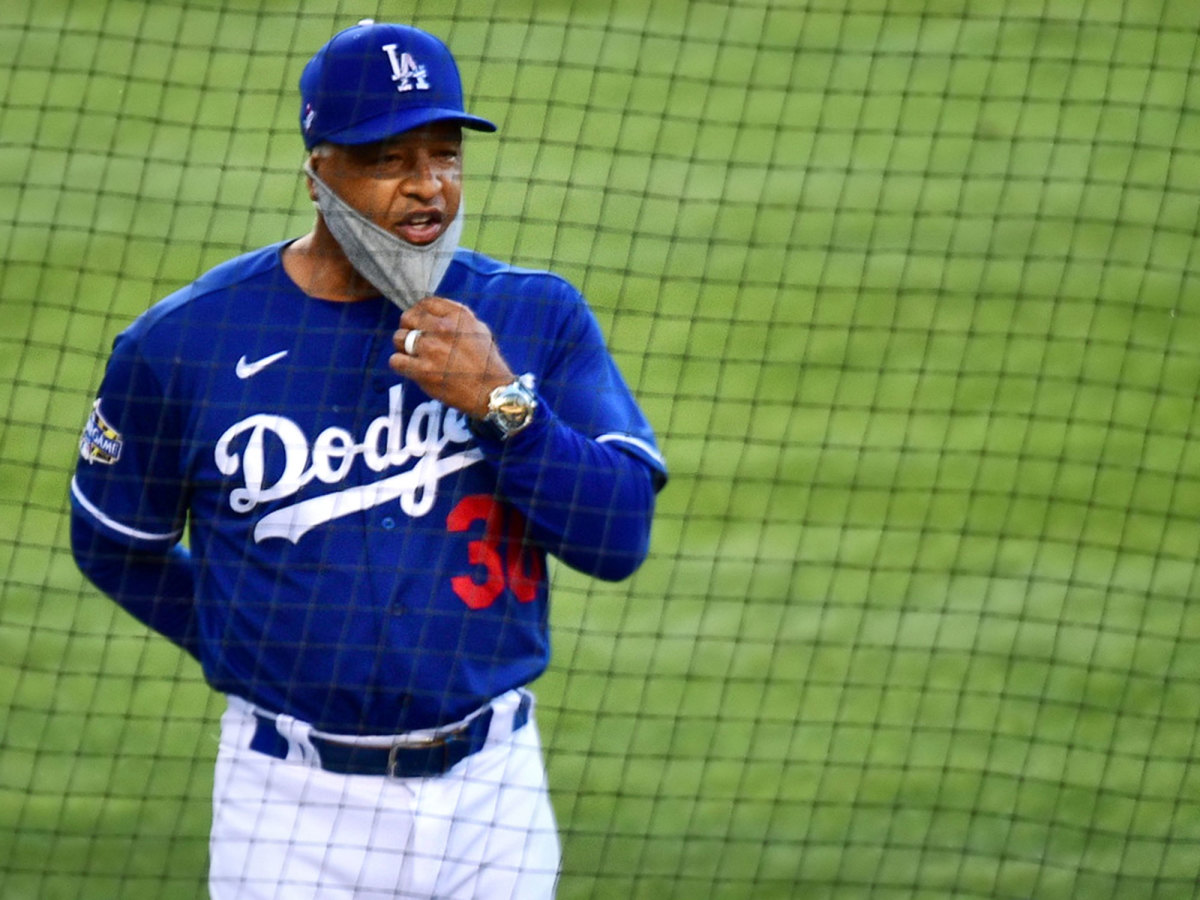Rob Manfred Blames Players, But MLB's Troubles Are His Fault
If you listen closely, between the cheers of virtual fans and the dings of tweets announcing another decision to opt out, you can hear it: the sound of MLB commissioner Rob Manfred beginning to blame players for the season’s possible collapse.
On Saturday, as 20% of the league was sidelined in an attempt to combat two separate coronavirus outbreaks, Manfred got to work on his spin rate. He would not cancel the season, he told ESPN. Yet. "The players need to be better,” he added, “But I am not a quitter in general and there is no reason to quit now. We have had to be fluid, but it is manageable."
Comissioner Rob Manfred tells me “We are playing. The players need to be better, but I am not a quitter in general and there is no reason to quit now. We have had to be fluid, but it is manageable.”
— Karl Ravech (@karlravechespn) August 1, 2020
This is, of course, nonsense. The “I am not a quitter” soundbite got the mockery it deserved: Refusing to put a stop to a public-health threat amid a public-health catastrophe is not stick-to-ititiveness; it’s negligence. But his more absurd words were “The players need to be better.”
Manfred needed to be better. If this blows up, it will be his fault.
At last count, COVID-19 has stricken 17 Marlins players and two coaches, and at least five members of the Cardinals. (The league permitted Miami to play the Phillies last Sunday with four positive tests and other results pending; by Monday that number had ballooned to 11 players and the two coaches.) The reports of the positive tests were followed almost immediately by reports suggesting that players had not been living entirely monastically.
That may be true. But the vaunted 113-page operations manual doesn’t say they have to. Baseball was never going to get 100% compliance from 100% of its participants 100% of the time. Manfred should have known that when he decided in June to impose a 60-game season. If he thought it would only be safe to play if no one ever tested positive, he should have fought harder for a bubble. The players didn’t want to spend four months in quarantine, and the owners—his bosses—were not eager to lose their stadium sponsorships, either. So they settled on a plan that included this cop-out: “MLB will not formally restrict the activities of Covered Individuals when they are away from Club facilities, but will expect the Covered Individuals on each Club to ensure that they all act responsibly.” Or in other words: Do what you want, but if you catch COVID-19, it’s your fault.
The league built in some cushion for that outcome, with 30-man rosters, three-man traveling taxi squads and 60-man player pools. MLB never planned to shut the season down after the first person tested positive.

So the goal all along has been to limit the spread. And that’s the league’s job.
The league doesn’t understand that, which it helpfully reminded fans on Friday when it announced the past week’s COVID-19 test results. First it offered the useless statistic that 0.2% of the samples had been new positives, which means the league gets credit for every negative test but escapes blame for all but one positive. Then it added, apparently triumphantly, that “21 of the 29 positives were from a single MLB Club; the remaining 29 Clubs had 8 positives (2 Major League players, 1 Alternate Site player, and 5 staff).”
This did not make the point MLB wanted to make. The league’s protocols are designed to allow for eight positives among 29 teams. They are supposed to thwart 21 on a single team.
It is not clear yet where the protocols failed. One popular theory is that the regulations surrounding rain delays are inadequate. Two days before the Marlins’ first positive test, after an exhibition game against the Braves, Miami manager Don Mattingly lamented, “We had all these guys and nowhere to go. Then we’ve got a zillion guys in the dugout, so there’s no way we’re social distancing.” Eight days later, Cubs first baseman Anthony Rizzo—a cancer survivor who is likely at higher risk for COVID-19 complications than the average person—tweeted his frustration: “Player safety? @mlb let’s sit around for 8 plus hours inside the clubhouse.. I’m sure I can find that somewhere in the 113 page player safety protocol.”
The protocols are woefully inadequate, so the weak spot could be anywhere. It will be almost impossible for the league to identify it definitively—which is one of the challenges of playing baseball outside of a bubble during a pandemic in the country with one of the world’s worst responses. You start to understand why Canada read those 113 pages and all but evicted the Blue Jays from Toronto. Whatever the answer, players should be genuinely frightened. They believed that the protocols could protect them. It’s become clear that they cannot.
Manfred is just the latest in a proud tradition of shepherds blaming their flocks for being eaten. Consider the government officials who in recent weeks have publicly berated young people for spreading COVID-19 at bars. Well, who opened the bars?
Ballplayers are not epidemiologists. For the most part, they are men in their 20s and early 30s who spent more time in the batting cages than in biology class. MLB has access to the best infectious-disease specialists in the country. If this falls apart, it’s not the guys in the baseball pants who are responsible. Don’t blame individuals for institutional ineptitude. Manfred needed to be better, and he wasn’t.
